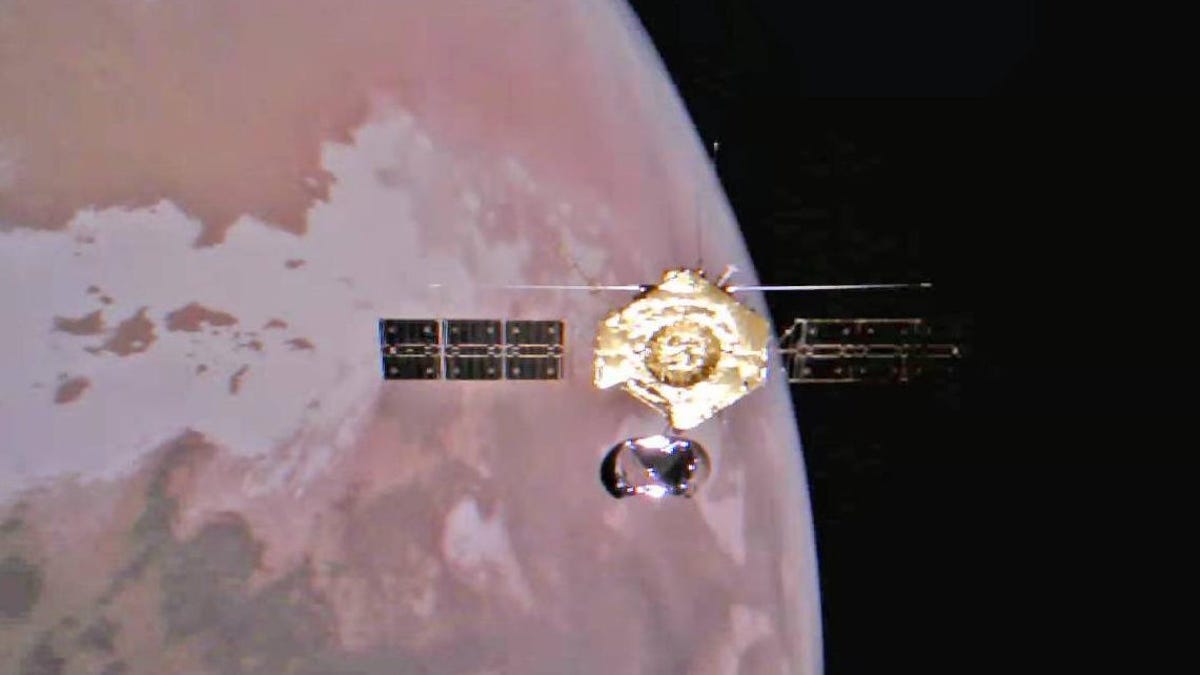China's Mars Orbiter Snaps Pic of Funky Potato Moon Phobos
We're going to need a bigger peeler.
I never tire of gazing into the pits, canyons and dunes of Mars, but there's fun stuff in orbit around the red planet too. Mars moon Phobos, a famously potato-shaped natural satellite, took on the role of party balloon on Saturday in celebration of the two-year launch anniversary of China's Tianwen-1 mission.
Phobos is looking very potato-y in this new high-resolution image from China's Tianwen-1 orbiter. The crater named Opik is noted.
Mars has two moons, Phobos and the smaller moon Deimos. Phobos -- 17 miles (27 kilometers) across at its widest -- is marked by impact craters and grooves. It's on a long, slow journey to destruction thanks to the stresses of orbiting so close to its host planet.
It will be millions of years before Phobos meets its doom, though, giving it plenty of time to pose for cameras. According to the China state-run China Daily, the "operation team seized the timing when the orbiter was relatively close to Phobos and captured clear images of the satellite in its 'full moon' state."
The Tianwen-1 mission, launched July 23, 2020, has been a big success for the China National Space Administration. The orbiter escorted a lander and the Zhurong rover to Mars, making China only the second country besides the US to successfully operate a rover on the planet's surface.
China's orbiter has delivered some surprising images of its environs over the past two years, including spectacular selfie shots.


